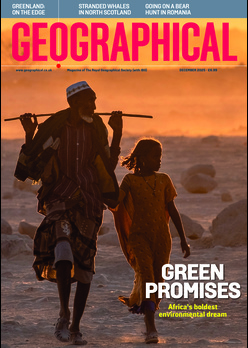
Due to mass coral bleaching event, 40 per cent of individual corals on a Great Barrier Reef island died in 2024
By
Greater in area than the UK and Ireland combined, the Great Barrier Reef is the largest coral reef system in the world, home to 400 types of coral, 1,500 species and fish and 4,000 types of mollusc.
But this vast ecosystem is continually under threat. A new study, published in ASLO, has shown that a mass bleaching event – the seventh to occur in the Great Barrier Reef since 1998 – hit the reef last year, in what scientists call the most widespread and ‘catastrophic’ incident yet.
Enjoying this article? Check out our related reads:
Researchers from the University of Sydney studied the health of 462 coral colonies at One Tree Island, located in the south of the Great Barrier Reef, following a mass bleaching event beginning in early 2024. After monitoring these colonies over four phases – February, April, May and July – they discovered 44 per cent of bleached colonies died. Mortality rates were much higher, at 95 per cent, for the Acropora coral, which experienced entire colony collapse.
Some colonies were ‘hard to recognise’ according to researchers, due to how degraded they had become. Others, like the Goniopora genus, were afflicted by not only bleaching but black band disease, caused when corals are placed under environmental stressors including high temperature levels, pollution and inadequate nutrition.
Out of all 462 colonies studied, just 92 did not experience bleaching.

For co-author of the study, Ana Vila Concejo, the new research is ‘a wake-up call for policymakers and conservationists.’
‘The resilience of coral reefs is being tested like never before, and we must prioritise strategies that enhance their ability to withstand climate change,’ Concejo continued.
What is coral bleaching?
Coral bleaching is a stress response initiated by coral. It is often heat-induced – like from rising sea temperatures due to climate change and the El Nino weather event – but can also be caused by runoff and pollution, as well as air exposure during extremely low tides. However, it originally manifests, the stress response results in the same outcome: corals release the algae from inside their tissues, a process that causes the familiar white appearance of bleached coral.
Coral bleaching does not mean a coral has died, but it does place greater stress on the invertebrate and increases its risk of death. This spells catastrophic news for the 25 per cent of marine life who are supported by corals globally, whether that be through providing shelter, food or a place to reproduce.
Coral bleaching is not unique to the Great Barrier Reef; similar bleaching occurs in areas including the Caribbean Sea, the Red Sea, the Gulf of Mexico and the Western Indian Ocean – and incidents are growing in number around the world.




